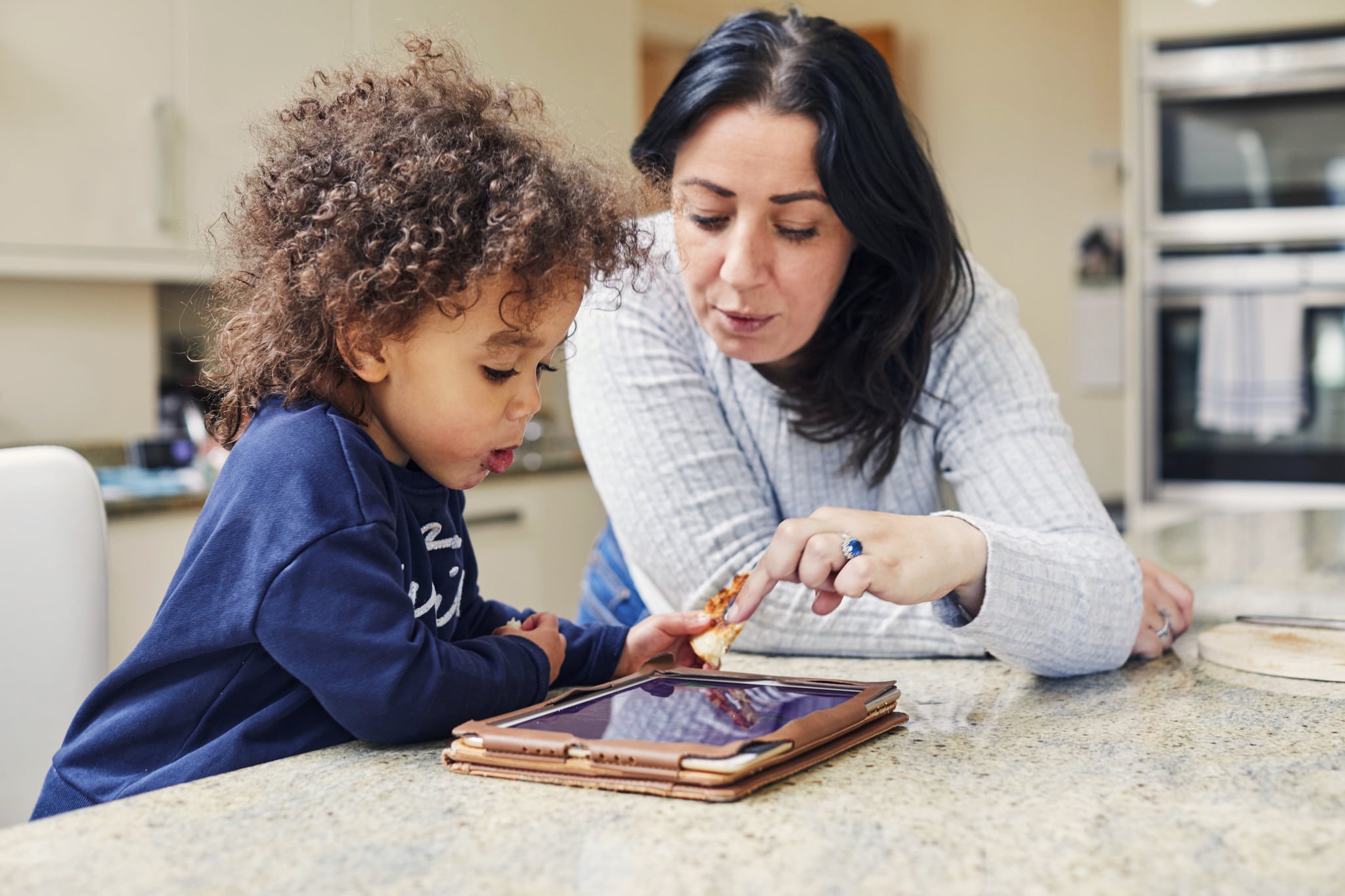Virtual Distance Learning Tips For Kids With Disabilities
A Psychologist and a Special-Needs Teacher's Tips to Help Kids With Disabilities Learn at Home

For parents of kids with disabilities, virtual learning presents a new set of challenges. Because many students receive additional attention and hands-on support from their special-education teachers, emulating that environment at home is nearly impossible. In the US, 7.1 million kids have individualized education programs (IEPs) — a document developed for each public-school child who is eligible for special education — which may make staying on top of your child's workload more complex. To help parents and caregivers who may be feeling frustrated with virtual or hybrid learning, we asked experts for their best tips for helping students with disabilities learn at home.
1. Create a Visual Schedule
Understandably, kids with disabilities may take a longer time to adjust to learning at home. If your child has difficulty focusing or is easily overwhelmed by a weekly schedule, try laying out each day's classes in an easy-to-understand format.
"For children who are following the hybrid learning model, remembering what the schedule looks like from week to week can be anxiety-provoking," explained Dr. Liz Nissim Matheis, a psychologist and founder of Psychological & Educational Consulting and a parent to a child with ADHD and anxiety. "If your child's schedule looks anything like my son's, it rotates every day with his morning and afternoon classes being swapped."
To help students adjust to these changes, Dr. Matheis suggests setting up your child's daily schedule in plain view so it can be referenced whenever needed. "Set up a whiteboard or a poster board with your child so that he knows what his schedule will look like from day to day," she said.
2. Declutter Your Kid's Space
For children who have attention disorders, keeping the distractions to a minimum is key. Because students have easier access to things like video games and cell phones, it's important to eliminate temptations as much as possible.
"If your child is working in his room, this may be a good time to look around and declutter the space," Dr. Matheis said. "Put away all the items that could serve as distractors, or at least keep them out of sight. For example, if your son's Nintendo Switch is within sight, he may want to reach for it when he's feeling overwhelmed or bored with an assignment. Place items within drawers or bins under the bed or in the closet to create a visually understimulating environment. If possible, place your child's desk against a wall and avoid windows, as they also serve as distractors."
3. Give Direct Instructions
Setting expectations for your kids is imperative. However, parents should do so in a way that's easy for children to understand. To help students with disabilities stay on top of their tasks, parents should consider giving direct, clear instructions for each task.
"Children who have processing difficulty may have a lower capacity for taking in information, which can instigate anxiety and manifest itself as a meltdown or anger," Dr. Matheis said. "As a result, you would give one direction at a time — which allows the child to process and follow through — before giving the next bit of information or direction. This keeps anxiety low and builds self-esteem."
4. Be Flexible With How and When Your Kid Learns
Sitting still for long periods of time and focusing on a screen are often challenges for kids with disabilities. Joanne Connolly, a special-education teacher in Pennsylvania, suggests encourageing students to utilise weighted lap pillows or blankets, seat cushions, or flexible seating options to keep them engaged. "Let your child hold a stuffed animal during live lessons," she said. "Some of our youngest learners do best sitting on their parents' lap."
Joanne also recommends ordering a sensory kit that contains fidget-friendly items — like play dough, rocks, or stress balls — for children who struggle with anxiety or have sensory processing disorders. This way, kids can keep their hands busy and stay calm through their lessons.
5. Advocate For Your Child
Parents of children with disabilities know how critical it is to keep an open dialogue with their teachers. However, that regular communication should be kicked up a few notches while students are learning at home. "Ask for some sort of weekly or biweekly contact to discuss how your child is doing. If you have a younger learner, you will be involved daily," Joanne said. "Ask the teacher for whatever you need!"
"Ask the teacher for whatever you need!"
Additionally, if virtual learning is simply not working for your children, be transparent about that with the school's staff. There may be different resources available to them. "If your child has more involved needs, ask your special-education director if an instructional assistant — or a person who helps teachers in an educational setting — can come to your home to help with virtual learning."
Parents can also ask about their district's compensatory education program. Otherwise known as Comp Ed, a compensatory educational program can help kids "catch up" when a school district is unable to provide adequate free, appropriate public education for a sustained amount of time. "To determine if your child qualifies for compensatory education, go through your child's IEP and look at the specially designed instruction," Joanne advised. "Is it appropriate for virtual learning? If not, an IEP revision is in order. Make sure your school district is in compliance!"
6. Set a Timer
Depending on your child's disability, staying on task and manageing their time can be especially challenging while learning virtually. "Many of our children become overwhelmed when they look at their email or Google classroom and notice how many assignments they may have," Dr. Matheis explained. For kids who struggle with anxiety, ADHD, or dyslexia, setting up a timer for each assignment will help children cultivate time-management skills.
"When asked to estimate how long an assignment will take, [students with disabilities] can seldom provide an accurate answer," explained author Patricia W. Newhall. "While some grossly underestimate the time required and set themselves up for disappointment and frustration, others greatly overestimate [the time] and feel overwhelmed before they even begin. Developing a sense of their individual task pace is essential for students to learn time management."
7. Go the Asynchronous Learning Route
A schedule composed of back-to-back Zoom sessions can be unproductive or simply not in your kiddo's best interest. Rather than struggling to ensure your child is paying attention, consider adopting a flexible learning plan.
"Even if you are given a schedule, rest assured you can engage in asynchronous learning — or learning that doesn't require real-time interaction — whenever you want," Joanne said. "Some days, learning altogether may be a wash. As a parent of a child with disabilities, remember that it's OK to take a day off from online learning, if necessary!" If you need guidance in creating a schedule that works best for your child, feel free to reach out to the teacher to learn about the options.









